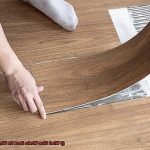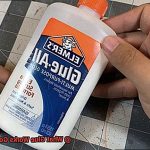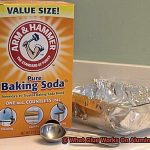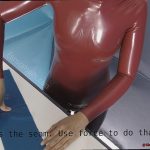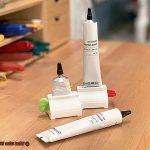Introduction:
Contents
- 1 What is Cyanoacrylate Glue?
- 2 What is Epoxy Adhesive?
- 3 Instant Adhesive Tapes
- 4 UV-Curing Adhesives
- 5 How to Apply these Glues for Maximum Strength
- 5.1 Clean and Prepare Surfaces:
- 5.2 To prepare smooth or non-porous surfaces, use sandpaper or a file to create a slightly rough texture. This roughens the surface and provides more grip for the glue, enhancing its bonding strength.
- 5.3 Apply the Right Amount of Glue:
- 5.4 Spread Glue Evenly:
- 5.5 Allow Sufficient Curing Time:
- 5.6 Apply Pressure:
- 6 Pros and Cons of Different Types of Glue
- 7 Common Applications of Instant Glues
- 8 Safety Precautions When Using Instant Glues
We’ve all been there – desperately searching for a glue that works faster than a speeding bullet. Waiting for glue to dry is about as thrilling as watching paint dry, and let’s face it, we’ve got better things to do with our time. Luckily, there are glues out there that work their magic in an instant, saving us from the agony of waiting and the frustration of failed bonds.
Now, before we dive into the world of instant adhesives, let’s get one thing straight – not all glues are created equal. Each type has its own superpower, designed for specific purposes. So buckle up and let’s explore some of the most powerful contenders in the glue game.
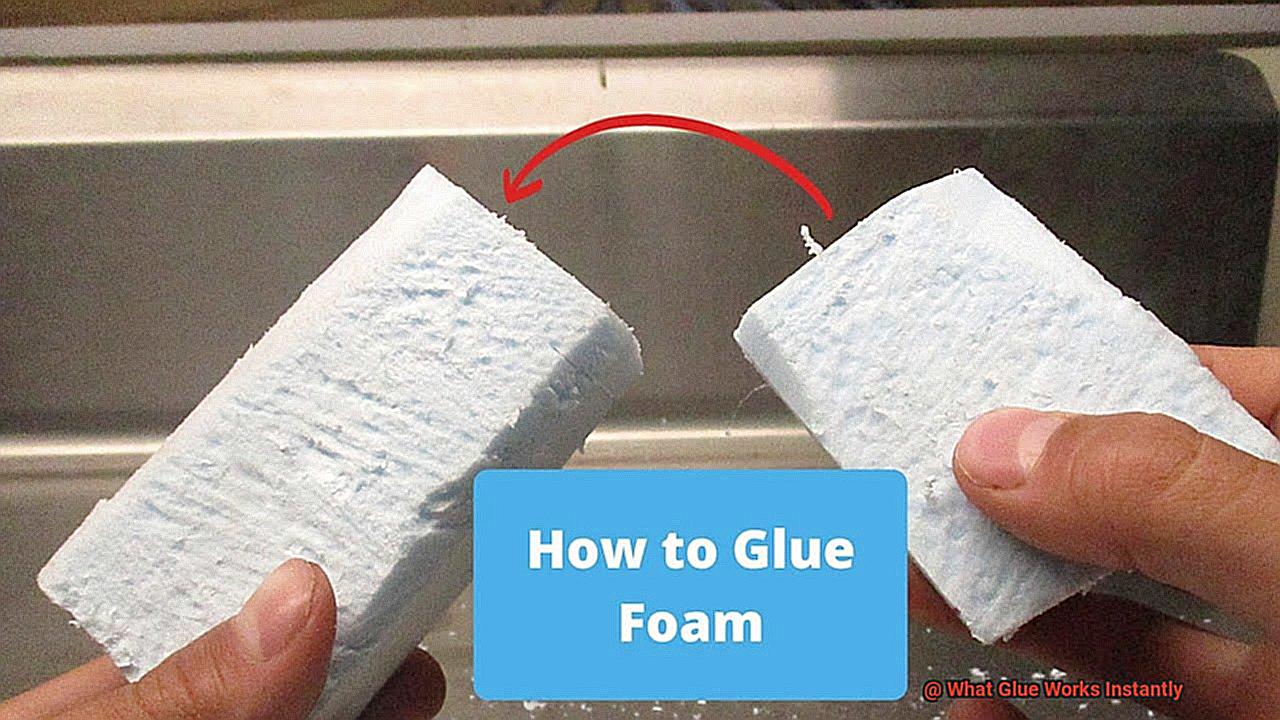
First up is Super Glue (cue dramatic music). This cyanoacrylate adhesive is like the superhero of quick fixes. It can bond metal, plastic, glass, ceramic – you name it. And here’s the best part: it forms an ultra-strong bond in mere seconds. Need to reattach broken jewelry? No problem. Fixing a loose shoe sole? Consider it done.
- Next on our list is Epoxy – the glue that means business. This stuff creates bonds so strong they could probably hold together a skyscraper (okay, maybe not quite). But seriously, epoxy is no joke. It works wonders on wood, metal, plastic – even concrete. Usually consisting of two parts – a resin and a hardener – this dynamic duo activates a chemical reaction that results in a rock-solid bond in just minutes.
- Last but certainly not least is Hot Glue – the arts and crafts enthusiast’s best friend. Armed with a trusty hot glue gun, you can conquer any DIY project with ease. The gun melts solid glue sticks into liquid form for easy application. Once cooled down, it hardens into a reasonably strong bond. Whether you’re repairing something or getting crafty with decorations or DIY creations, hot glue has got your back.
Now, hold up. Before you start slapping these instant glues on everything in sight, there’s a secret to their success – proper surface prep and application techniques. Clean, dry surfaces that are properly aligned will ensure a bond that stands the test of time.
In a nutshell, super glue, epoxy, and hot glue are the superheroes of instant bonding. They save us time, frustration, and maybe even some money. So next time you’re in a sticky situation (pun intended), reach for one of these instant adhes
What is Cyanoacrylate Glue?
Cyanoacrylate glue, commonly known as super glue or instant glue, is an extraordinary adhesive that has gained immense popularity for its lightning-fast bonding properties. As a member of the acrylic adhesives family, it has become widely used in various applications because of its ability to create robust and durable bonds almost instantaneously.
So, how does this remarkable glue work its magic? The key ingredient in cyanoacrylate glue is a monomer called cyanoacrylate. When exposed to moisture, whether in the air or on the surfaces being bonded, this monomer undergoes a fascinating chemical reaction known as polymerization. This reaction causes the glue to solidify and form an incredibly strong bond within mere seconds or minutes.
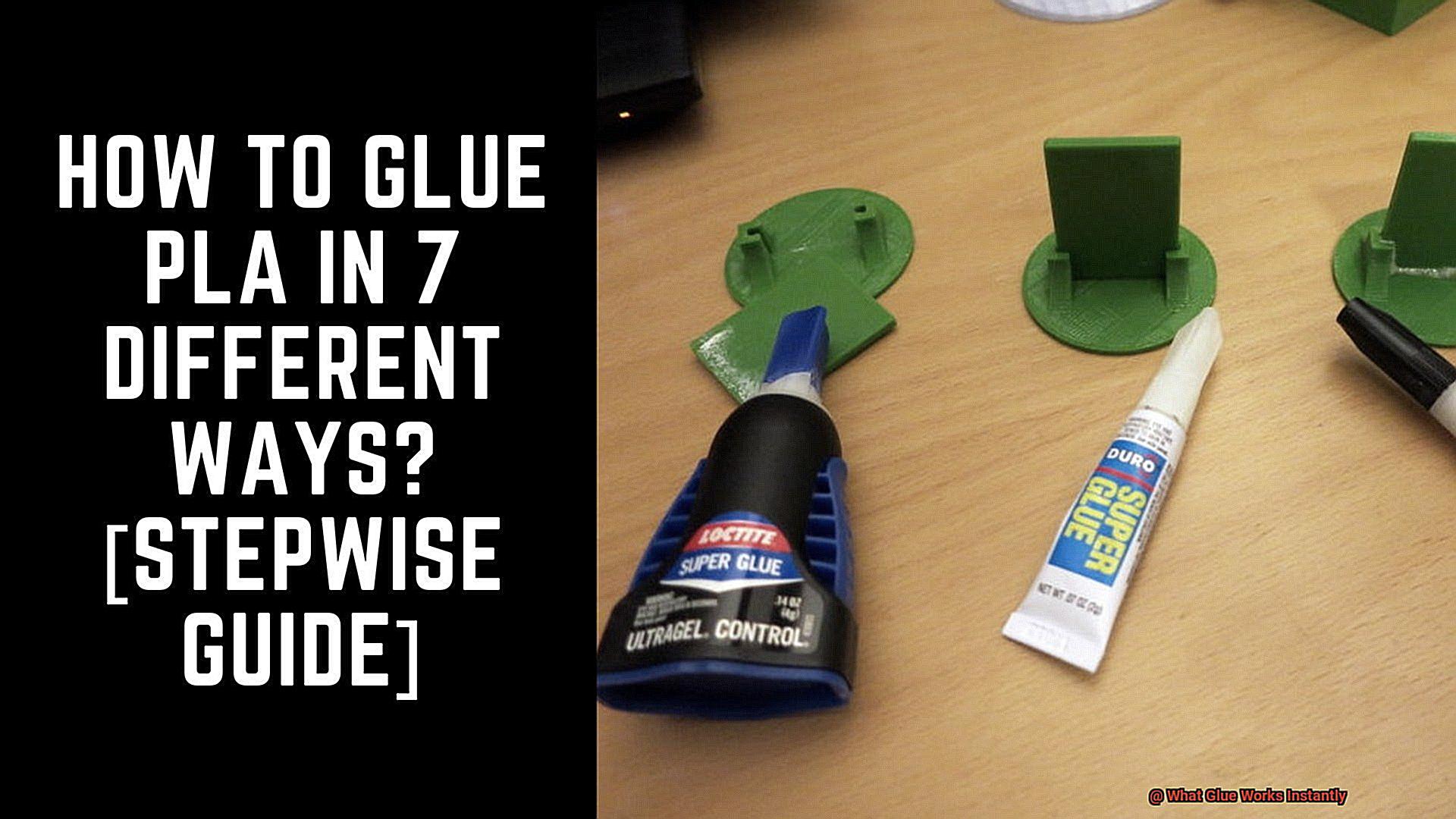
One of the most significant advantages of cyanoacrylate glue is its astonishingly quick drying time. Unlike other adhesives that demand hours or even days to fully cure, cyanoacrylate glue can bond surfaces in the blink of an eye. This makes it perfect for emergency repairs or when working with small objects that require precise alignment.
Moreover, the strength of cyanoacrylate glue is truly remarkable. Once cured, it creates a bond that can withstand impact, vibration, and temperature changes with ease. This makes it suitable for use on a wide range of materials such as plastics, metals, ceramics, rubber, and even certain types of wood.
However, it is important to note that cyanoacrylate glue may not be suitable for every application. It performs best on clean and dry surfaces, as the presence of oil, grease, or moisture can hinder its bonding effectiveness. Additionally, it may not adhere well to certain types of plastics or materials with low surface energy.
When using cyanoacrylate glue, it is highly recommended to apply a thin layer onto one surface and then press the two surfaces together firmly. The glue will bond almost instantly, so it is crucial to ensure proper alignment before making contact. Any excess glue can be effortlessly removed with acetone or nail polish remover.
What is Epoxy Adhesive?
In the world of glues, there are countless options, each with its own unique properties and uses. In this blog post, we’ll explore two popular contenders: epoxy adhesive and cyanoacrylate glue. Let’s dive into the strengths and weaknesses of these superhero glues.
Epoxy Adhesive – The Mighty Bonding Agent
Epoxy adhesive is a strong and durable glue composed of resin and hardener. When mixed, these components undergo a chemical reaction, resulting in a powerful bond. Key features of epoxy adhesive include:

- Instant bonding capabilities for quick applications.
- Versatility in bonding materials like metal, wood, plastic, glass, and ceramic.
- Resistance to heat, chemicals, and moisture for demanding environments.
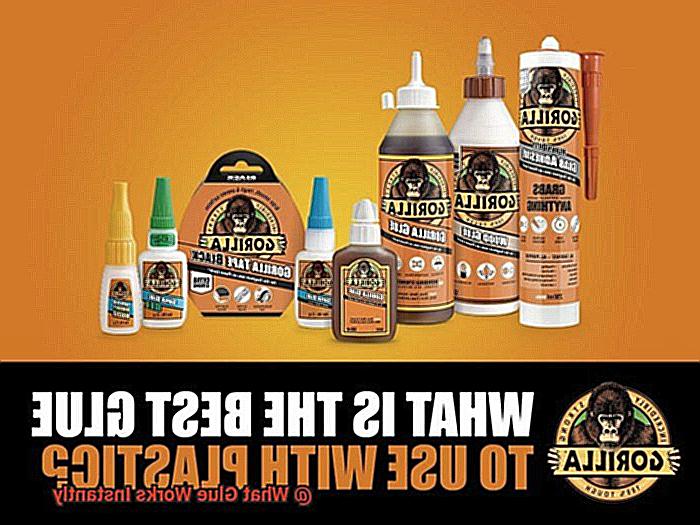
Cyanoacrylate Glue – The Speedy Saver
Cyanoacrylate glue is a fast-acting adhesive that solidifies upon contact with moisture. Its rapid bonding time makes it ideal for urgent repairs or delicate projects. However, precautions must be taken:
- Surfaces should be clean and dry for optimal results.
- Avoid contact with oil or moisture to prevent premature bonding.
Choosing the Right Hero for Your Projects
When deciding between epoxy adhesive and cyanoacrylate glue, consider the following factors:
- Strengths and weaknesses of each glue.
- Application-specific considerations, such as construction, automotive, or electronics.
- Long shelf life and cost-effectiveness of epoxy adhesive.
- Ease of use and accessibility of cyanoacrylate glue.
Instant Adhesive Tapes
Look no further than instant adhesive tapes. These super-powered tapes are the perfect solution for all your bonding needs. Let’s dive into the world of instant adhesive tapes and explore the different types and their uses.
First up, we have double-sided instant adhesive tapes. These tapes have adhesive on both sides, allowing you to join two surfaces together without any visible residue. Say goodbye to sticky messes and hello to seamless bonds. Whether you’re crafting or packaging, these tapes will have you wondering why you ever bothered with messy glue bottles.
Next on our list is foam instant adhesive tape. With a layer of foam between the adhesive surfaces, this tape provides cushioning and flexibility. It’s perfect for mounting objects or providing insulation. Need to stick something to a wall without damaging it? Foam instant adhesive tape is the answer. It’s like a gentle hug for your fragile items.
Last but certainly not least, we have film instant adhesive tape. This tape is not your average tape; it’s a force to be reckoned with. With its thin film layer, it offers high strength and durability. It’s a favorite in industries like automotive and aerospace, where toughness is non-negotiable. If you need a bond that can withstand the harshest conditions, film instant adhesive tape is your go-to warrior.
Using instant adhesive tapes is as easy as 1-2-Simply apply the tape to the desired surface and press firmly to ensure a strong bond. No need to wait for glue to dry or deal with messy cleanup. It’s quick, easy, and hassle-free. Say goodbye to wasted time and hello to efficiency.
When choosing an instant adhesive tape, consider factors like the materials being bonded, the level of strength required, and any environmental conditions that may affect the bond. Popular brands like 3M, Scotch, Gorilla, and Tesa offer a wide range of options to suit your specific needs. They’ve got you covered, no matter the challenge.
UV-Curing Adhesives
Meet UV-curing adhesives, the superheroes of the adhesive world. These remarkable glues provide instant bonding when exposed to ultraviolet light, making them a favorite in industries like electronics, medical devices, automotive, and aerospace.
What sets UV-curing adhesives apart from traditional glues? Let’s explore their advantages and limitations to understand why they’re so highly regarded.
Advantage #1: Speedy Bonding
One of the most impressive features of UV-curing adhesives is their lightning-fast curing time. In just a matter of seconds under UV light, these adhesives transform from liquid to solid, creating a strong bond. This rapid curing process allows for quick assembly and production, saving valuable time and improving efficiency.
Advantage #2: Versatility in Formulations
UV-curing adhesives come in different formulations to suit various applications. UV-curable acrylates are perfect for bonding plastics, glass, and metals, while UV-curable epoxies are ideal for heat-sensitive materials or substrates with low surface energy. No matter the material you need to bond, there’s a UV-curing adhesive formulation tailored to your needs.
Advantage #3: Strong and Reliable Bonds
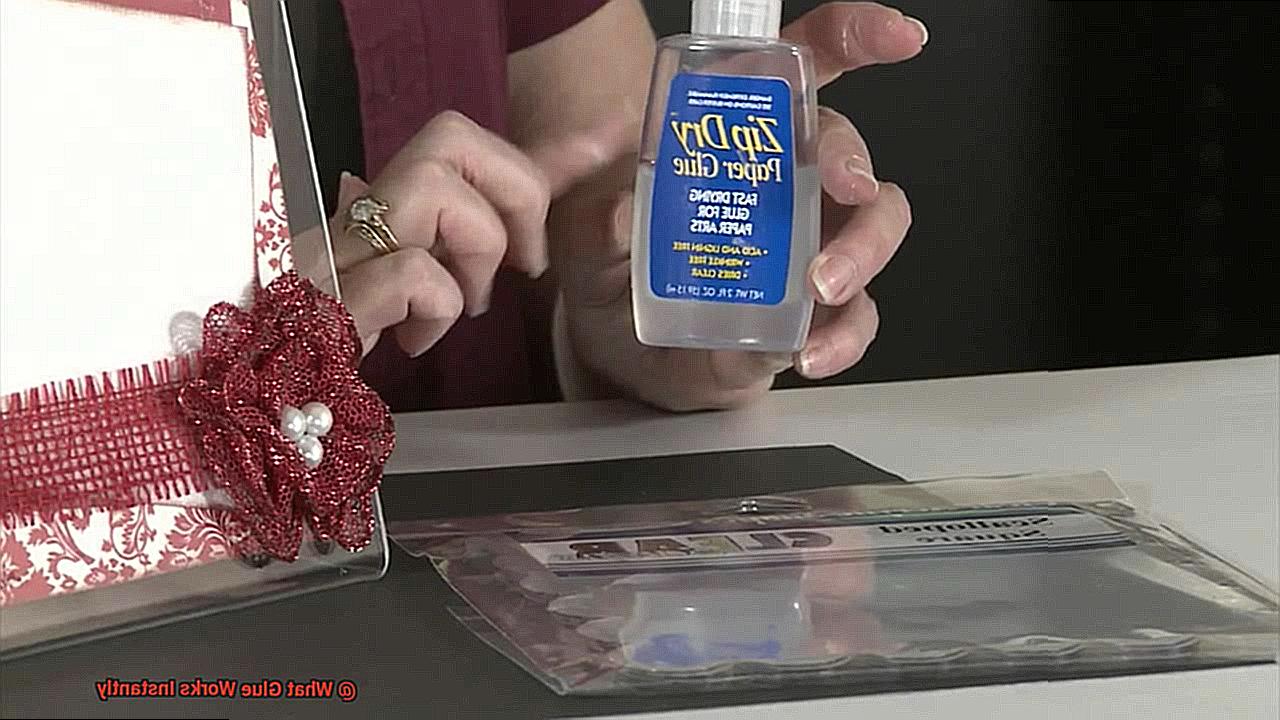
UV-curing adhesives offer excellent adhesion to a wide range of substrates, even difficult-to-bond materials like polypropylene and polyethylene. They provide high bond strength, resistance to temperature and moisture, and good chemical resistance. When you need a bond that can withstand tough conditions, UV-curing adhesives deliver.
Advantage #4: Flexible Application
UV-curing adhesives not only provide instant bonding but also offer flexibility in application. They can be applied in various forms, including liquids, gels, or pastes, depending on the specific requirements of your project. Whether it’s precise syringe dispensing or automated systems, you have control and precision in applying the adhesive.
Advantage #5: Environmentally Friendly
In today’s world, sustainability is paramount. UV-curing adhesives are a greener option compared to solvent-based adhesives. They are solvent-free and do not emit harmful substances into the environment during curing. By choosing UV-curing adhesives, you’re not only getting a strong bond but also contributing to a cleaner and safer planet.
However, like any superhero, UV-curing adhesives have their limitations. One challenge is their sensitivity to UV light. The adhesive requires sufficient UV light exposure for proper curing to occur. Shadows or areas shielded from UV light may result in weak bonds. To ensure optimal results, proper UV exposure is crucial during the bonding process.
How to Apply these Glues for Maximum Strength
When it comes to bonding materials together, achieving maximum strength is essential. Whether you’re working on a DIY project or repairing a broken item, understanding how to apply glues for maximum strength can make all the difference. In this article, we’ll explore five key factors to consider when applying glues, ensuring strong and durable bonds that stand the test of time.
Clean and Prepare Surfaces:
Before applying any glue, it is crucial to clean and prepare the surfaces you intend to bond. Remove any dirt, dust, grease, or moisture that could hinder the adhesive’s ability to form a strong bond. A clean surface ensures maximum contact and adhesion between the glue and the materials.
To prepare smooth or non-porous surfaces, use sandpaper or a file to create a slightly rough texture. This roughens the surface and provides more grip for the glue, enhancing its bonding strength.
Apply the Right Amount of Glue:
Using the appropriate amount of glue is vital for achieving maximum bonding strength. Applying too little may result in weak adhesion, while using too much can lead to excessive messiness and reduced durability. Follow the manufacturer’s instructions regarding the recommended amount of glue to use for your specific application.
Spread Glue Evenly:
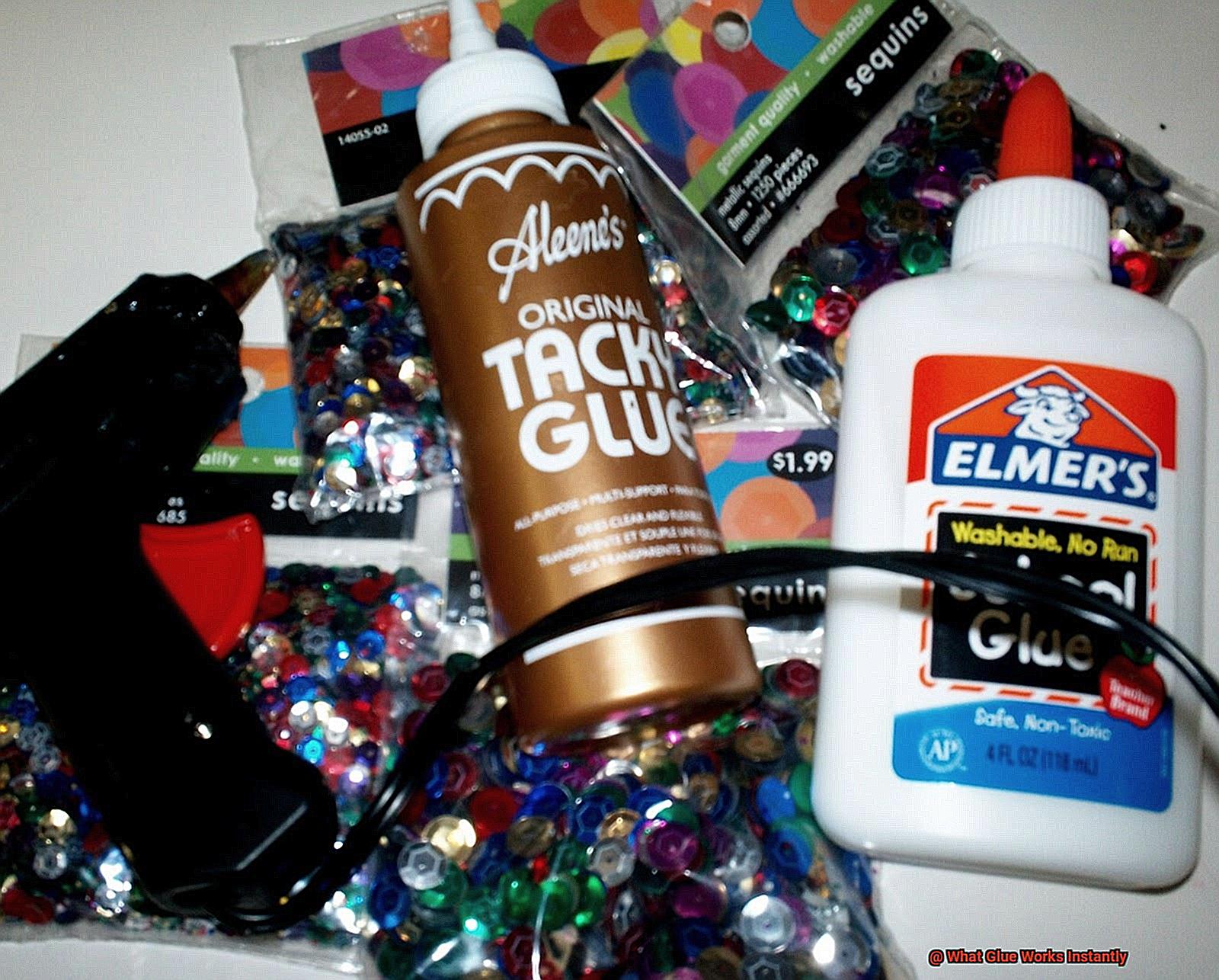
Once applied, spread the glue evenly across the surface using a brush, spatula, or any suitable tool. Ensure that the adhesive covers the entire area being bonded, leaving no gaps or uneven patches. This even distribution guarantees a strong and reliable bond.
Allow Sufficient Curing Time:
Different types of glues have varying curing times – the duration required for the adhesive to fully dry and reach its maximum strength. It is crucial to allow sufficient curing time before subjecting the bonded materials to any stress or load. Rushing this step can compromise the strength of the bond and result in weaker joints.
Apply Pressure:
Applying pressure during the curing process helps promote maximum contact between the surfaces being bonded, resulting in a stronger bond. Use clamps, weights, or any other means of applying consistent pressure as recommended by the manufacturer. This ensures that the adhesive forms a tight and secure bond between the materials.
Pros and Cons of Different Types of Glue
When it comes to gluing materials together, time is often of the essence. That’s where instant glue, also known as cyanoacrylate glue or super glue, comes to the rescue. This adhesive works like magic, forming a strong bond within seconds of application. In this blog post, we will explore the pros and cons of using instant glue, so you can make an informed decision for your next project.
Lightning-Fast Drying Time:
One of the main advantages of instant glue is its incredible speed. Unlike other glues that require hours to dry, instant glue sets within seconds. Just imagine the satisfaction of seeing your materials bond right before your eyes. Whether you’re working on a school project that’s due tomorrow or fixing a broken toy, instant glue will save the day.
Instant glue’s fast drying time also means that you don’t have to wait around for hours, holding materials together until they dry. This makes it ideal for quick repairs and small-scale projects where time is of the essence.
Versatility at Its Finest:
Instant glue is a true multitasker. It can bond a wide range of materials, including metal, plastic, wood, ceramics, and more. This versatility makes it a go-to adhesive for various applications, from arts and crafts to household repairs. With instant glue in your toolbox, you’ll have the power to fix almost anything.
The ability to bond different materials also means that you don’t need multiple types of glue for different projects. Instant glue simplifies your adhesive needs by being a one-size-fits-all solution.
Unbreakable Bonds:
Once cured, instant glue forms an unbreakable connection between surfaces. This means that your glued items will stay together for a long time, even under tough conditions. Whether you’re repairing a broken mug handle or sticking together pieces of a delicate model, instant glue will ensure a durable and permanent bond.
The strong bond created by instant glue means that you can have confidence in the longevity of your project. You won’t have to worry about items falling apart or coming undone after a short period of time.
Withstanding the Elements:
Another advantage of instant glue is its resistance to moisture and temperature changes. It can handle both indoor and outdoor applications with ease. So whether you’re fixing a garden ornament or repairing a leaky pipe, you can trust that instant glue will hold up against water, heat, and cold.
The ability to withstand different conditions makes instant glue suitable for a wide range of projects. Whether you’re working on crafts that may come into contact with water or repairs that need to withstand temperature fluctuations, instant glue has got you covered.
Common Applications of Instant Glues
Prepare to be astonished by the versatility and quick bonding capabilities of these magical adhesives.
Woodworking Wonders:
For woodworking enthusiasts, instant glues are an invaluable tool. Whether you need to fix a loose joint or repair a broken chair, these adhesives work their magic, creating strong bonds between wood pieces with ease. From cabinets to furniture, instant glue ensures your woodworking projects withstand the test of time.
Crafting and DIY Delights:
Calling all crafters and DIY enthusiasts. Instant glues are here to enhance your creative projects. With the ability to bond plastic, metal, fabric, and more, these adhesives are your secret weapon for transforming ordinary materials into extraordinary works of art. From creating stunning jewelry to repairing household items, instant glues open up a world of possibilities for your crafting endeavors.
Automotive Assistance:
In the fast-paced automotive industry, every second counts. Instant glues come to the rescue by securely bonding different components and materials in cars. Whether it’s attaching trim pieces or securing loose parts, these adhesives ensure that everything stays in place as you hit the road. Say goodbye to rattling noises and hello to a smoother driving experience.
Medical Marvels:
Even in the medical field, instant glues play a crucial role. Imagine reducing the need for traditional sutures with quick and strong bonding properties. These glues are used for wound closure, providing a reliable solution for holding incisions together during surgeries or other medical procedures. With instant glues, patients can experience faster healing times and reduced scarring.
Electronics Embrace:
In the world of electronics, precision is paramount. Instant glues step up to the challenge by securing delicate components onto circuit boards and fixing loose wires. These adhesives ensure that your electronic devices stay intact and function flawlessly, whether it’s a smartphone, a computer, or any other electronic gadget. Say goodbye to loose connections and hello to seamless performance.
Jewelry Gems:
In the glamorous world of jewelry, instant glues shine bright. From stone setting to securing gemstones onto various types of jewelry settings, these adhesives provide a strong bond that keeps your precious stones safely in place. With instant glues, your jewelry pieces become masterpieces that stand the test of time.
Footwear Fixers:
Got a pair of worn-out shoes that need some tender loving care? Instant glues are your go-to solution for repairing shoes and attaching soles. Bid farewell to uncomfortable footwear and welcome reliable repairs. Whether it’s sneakers, high heels, or boots, instant glues help restore your favorite footwear to its former glory.
Safety Precautions When Using Instant Glues
Instant glues, also known as cyanoacrylate adhesives, are widely used for their quick bonding properties. However, it is crucial to prioritize safety when using these glues to avoid accidents or injuries. By following a few simple precautions, you can ensure a smooth and accident-free glue experience.
First and foremost, proper ventilation is essential when working with instant glues. These glues emit strong fumes that can cause irritation to the eyes, nose, and throat. To minimize exposure, work in a well-ventilated area or use a fan to circulate fresh air. Opening windows can also help maintain air quality.
Protective gear is another important safety measure when handling instant glues. Wearing gloves and safety glasses can prevent accidental contact with the glue and protect your hands and eyes from potential harm. Remember, these glues bond quickly, so it’s better to be safe than sorry.
Reading and following the manufacturer’s instructions is crucial before using instant glues. Different brands may have specific guidelines and precautions that need to be followed for safe usage. Pay close attention to any warnings or cautions mentioned on the packaging.
Precision is key when applying instant glue. Avoid using excessive amounts of glue, as it can overflow or drip onto unintended surfaces, causing damage or unintentional bonding. Instead, apply a small amount of glue precisely to minimize risks.
Proper storage is also necessary when not using instant glues. Store them in a cool and dry place away from direct sunlight or extreme heat. Ensure that the containers are tightly sealed to prevent leakage or evaporation, which can reduce the effectiveness of the glue.
In case of accidental contact with instant glue on the skin, it is important to remain calm. Do not attempt to pull or force apart bonded skin, as this can lead to injuries. Instead, soak the affected area in warm soapy water and gently peel the bonded surfaces apart. If necessary, seek medical attention.
Lastly, it is crucial to keep instant glues out of reach of children and pets. These glues are not meant to be ingested and can be harmful if swallowed. Store them in a secure location where they cannot be accessed by curious hands or paws.
eP3xJIJ-TbU” >


